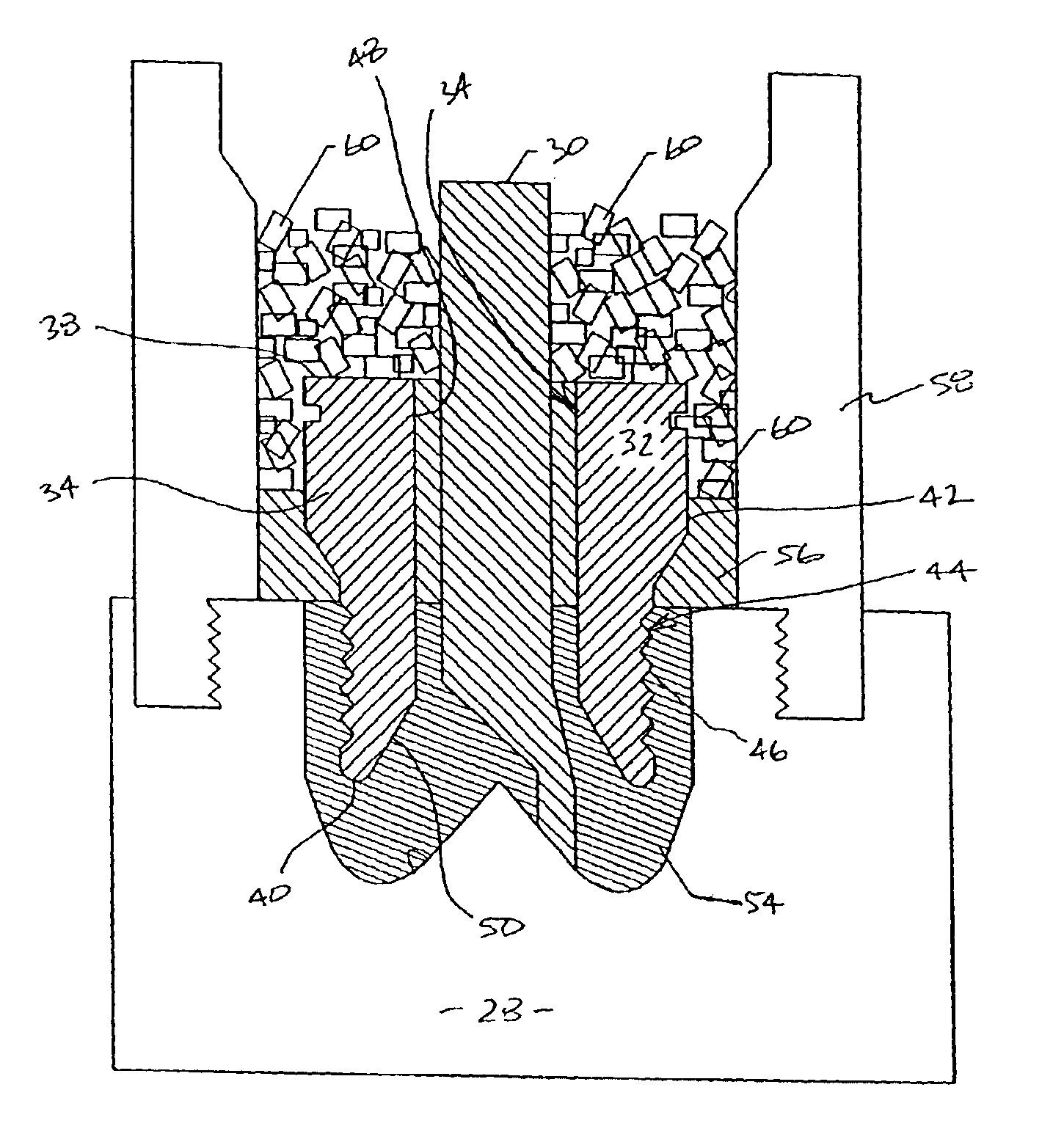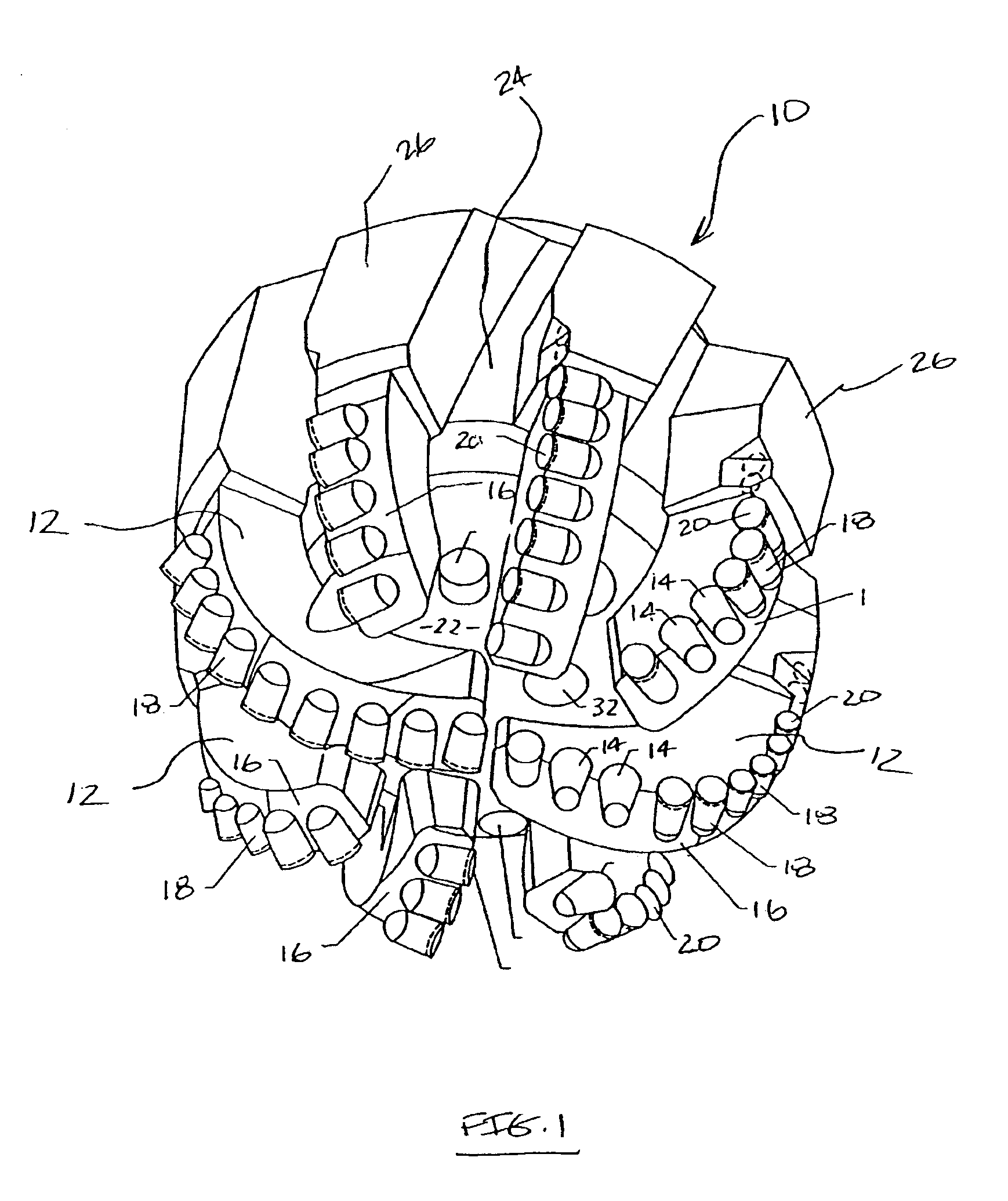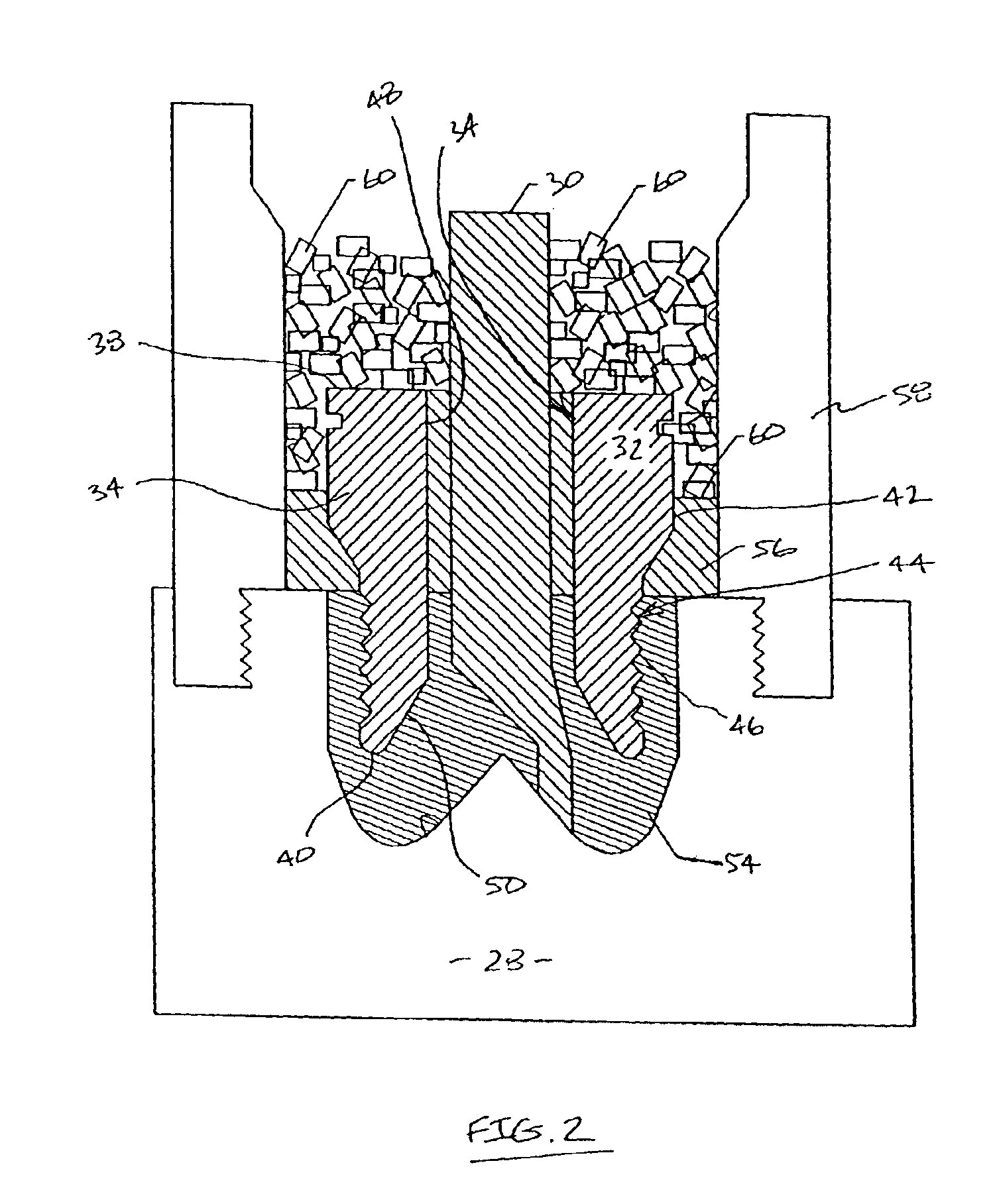High-strength/high-toughness alloy steel drill bit blank
a high-strength, alloy steel technology, applied in the field of steel blanks, can solve the problems of low degree of strength exhibited by conventional steel blanks, lack of material strength necessary for application with today's high-performance drill bits, etc., and achieve the effect of improving strength
- Summary
- Abstract
- Description
- Claims
- Application Information
AI Technical Summary
Benefits of technology
Problems solved by technology
Method used
Image
Examples
example no.1
EXAMPLE NO. 1
Low Carbon, Low Alloy Steel Composition
[0040]A PDC drill bit was constructed, according to the principles of this invention, by the above-described infiltration method (illustrated in FIG. 2) comprising lowering a drill bit blank into a graphite mold. The drill bit blank was configured in the manner described above and illustrated in FIGS. 2 and 3, and was formed from a low carbon, low alloy steel comprising carbon in the range of 0.13 to 0.18 pbwt, manganese in the range of 0.7 to 0.9 pbwt, chromium in the range of 0.45 to 0.65 pbwt, nickel in the range of 0.7 to 1 pbwt, molybdenum in the range of 0.45 to 0.65 pbwt as major alloying elements, and a remaining amount iron. Low carbon, low alloy steels comprising this material composition include SAE 4715 steel (also referred to as PS-30) and PS-55 steel. A preferred low carbon, low alloy steels is SAE 4715 steel, which comprises nominally 0.15 pbwt carbon, 0.8 pbwt manganese, 0.55 pbwt chromium, 0.85 pbwt nickel, and 0.5...
example no.2
EXAMPLE NO. 2
Low Carbon, Microalloyed Steel Composition
[0042]A PDC drill bit was constructed, according to the principles of this invention, by the above-described infiltration method (illustrated in FIG. 2) comprising lowering a drill bit blank into a graphite mold. The drill bit blank was configured in the manner described above and illustrated in FIGS. 2 and 3, and was formed from a low carbon, microalloyed steel comprising carbon in the range of from about 0.1 to 0.3 pbwt, manganese in the range of from about 0.9 to 1.5 pbwt, chromium in the range of from about 0.01 to 0.25 pbwt, nickel in the range of from about 0.01 to 0.2 pbwt, molybdenum in the range of from about 0.001 to 0.1 pbwt as major alloying elements, silicon in the range of from about 0.15 to 0.3, one of the microalloying elements in the following ranges: vanadium in the range of from about 0.05 to 0.15 pbwt, niobium in the range of from about 0.01 to 0.1 pbwt, and titanium in the range of from about 0.01 to 1 pbwt,...
PUM
| Property | Measurement | Unit |
|---|---|---|
| toughness | aaaaa | aaaaa |
| tensile strength | aaaaa | aaaaa |
| temperature | aaaaa | aaaaa |
Abstract
Description
Claims
Application Information
 Login to View More
Login to View More - R&D
- Intellectual Property
- Life Sciences
- Materials
- Tech Scout
- Unparalleled Data Quality
- Higher Quality Content
- 60% Fewer Hallucinations
Browse by: Latest US Patents, China's latest patents, Technical Efficacy Thesaurus, Application Domain, Technology Topic, Popular Technical Reports.
© 2025 PatSnap. All rights reserved.Legal|Privacy policy|Modern Slavery Act Transparency Statement|Sitemap|About US| Contact US: help@patsnap.com



